Via Text from Sigmon Whitener
Sadako and I had a great time with you on the 2 1/2-DAY DeSoto IPT. And, in just a couple of days, we learned a lot more than we ever expected to.
Your Call?
Which of the three background colors do you prefer for a preening white pelican?
These Just About Sum It Up
Keith Solberg: January 13, 2024 at 6:40pm
I like the bird’s pose. The rocks are OK, but IMO they might be better if they were roughly the same height. The extra height on the right upsets the image’s balance for me.
with love, a
Arthur Morris/BIRDS AS ART: January 13, 2024 at 11:11pm
Thanks for leaving a comment, Keith. For me, the extra height of the rocks on the right balance’s the image perfectly. And just for the record books, I think that it is a fantastic image.
Cliff Beittel: January 14, 2024 at 7:53pm
Agree about the height of the rocks on the right–bird seems positioned perfectly against the background. The background has a desert look–like Joshua Tree NP without the trees. Not a negative, just different and interesting.
Arthur Morris/BIRDS AS ART: January 15, 2024 at 7:08am
Thanks, Cliff. The ambience under the bridge is not very pleasing :-).
As I was making that image, I thought, “I am not gonna like those rocks — they are too close to the bird.” I was happy that the super-wide f/2.8 aperture blurred them so nicely.
with love, a
What’s Up?
I learned on Saturday morning that Alaska Airlines had cancelled my nonstop Monday afternoon flight from Orlando to San Diego as the airline was forced to ground many Boeing 737 Max 9 flights after last week’s mid-air cabin panel blowout. (You can learn about the FAA investigation here.) I called the airline and looked into new flights for Monday. I went with one where I’d have to leave Orlando more than two hours earlier, layover at DFW for two hours, and arrive in San Diego at about the same times as originally planned.
But when the Buffalo Bills/Pittsburgh Steelers game (go Bills!) was moved from Sunday to Monday, I decided that I did not want to miss that game and the Philadelphia Eagles/Tampa Bay Buccaneers (go Bucs!) as well. So I looked for a flight on Tuesday and found a nonstop from MCO to SAN. I called Alaska on Saturday evening, but with so many cancellations and delays because of the grounded aircraft and the frigid weather and snow, the recording said, “The longest wait time to speak to an agent is five hours.” I went to bed.
I woke at 5:30am on Sunday and figured that if I called then, I could quickly change my flight. I got a message stating: “The longest wait time to speak to an agent is six hours.” With no choice, I plugged my cell phone in and waited on hold. I did get lots of work done making sure that I took the phone with me when I left my office. After two hours twenty minutes, a pleasant agent answered and changed my flights in a very few minutes. I will be flying to San Diego nonstop on Tuesday afternoon.
I’ve been flying Alaska a lot recently and honestly say that they have fantastic customer service. All of my flights have been pleasant and all of my luggage has arrived on time — knock on wood …
Today is Monday 15 January 2024. I will continue packing for my 4-week CA trip. Wherever you are and whatever you choose to do, I hope that you too have a great day.
Please remember to use the B&H links that are found on most blog pages and to use the BIRDSASART discount code at checkout when purchasing your new gear from Bedfords to get 3% back on your credit card and enjoy free second-day air FedEx. Please, also, consider joining a BAA IPT. You will be amazed at how much you will learn!
If an item — a Delkin flash card, or a tripod head — for example, that is available from B&H and/or Bedfords, is also available in the BAA Online Store, it would be great, and greatly appreciated, if you would opt to purchase from us. We will match any price. Please remember also to use my B&H affiliate links or to earn 3% cash back at Bedfords by using the BIRDSASART discount code at checkout for your major gear purchases. Doing either often earns you free guides and/or discounts. And always earns my great appreciation.
|
|
|
This image was created at Lakeland, FL on 10 January by Sigmon Whitener on a 2 1/2-DAY Fort DeSoto private IPT. He used a RWS monopod/Wimberley MonoGimbal Head-mounted Nikon NIKKOR Z 800mm f/6.3 VR S Lens with the Nikon Z9 Mirrorless Camera. ISO 400: 1/1250 second at f/8 in Manual mode. At 8:56:43 on a sunny morning. Image optimization and how-to video by Arthur Morris/BIRDS AS ART Image #1: American White Pelican preening |
Change of Plans
Leery of the forecast on Wednesday morning, I suggested that we detour and head for Lakeland and the white pelicans instead of walking North Beach at Fort DeSoto in a northwest wind. Sigmon and Sadako agreed. There were about two dozen of the big birds lined up on their favorite bulkhead. It turned out to be a fabulous morning.
The Nikon Z9 Mirrorless Camera Body versus the Nikon Z8 Mirrorless Camera Body
The two cameras are virtually identical. As the Z8 does not have the built-in battery grip, it is physically smaller and weighs almost a full pound less — the Z8 is 2.0 pounds with a battery and a flash card as compared to 2.9 pounds for the Z9. The Z8 costs exactly $1500 less. AF performance and the image quality are identical, both of course are dependent on the skill of the operator.
Unless you have a problem with its smaller body size and the lack of a vertical grip, the Z8 would be the way to go. If I were shooting Nikon, I’d be using a Z8.
If you are a Nikon user who can add any relevant info here, please leave a comment sharing what you know.
|
|
|
You can purchase your copy here in the BAA Online Store for $69.00. Or Call Jim weekdays at 863-692-0906 with a credit card in hand. The Nikon Z9 Guide for Wildlife Photographers |
The Nikon Z9 Guide for Wildlife Photographers/by Warren Hatch — Editorial Consultant: Arthur Morris
Updated for Firmware V4.0
In this downloadable e-book (you will receive a link by e-mail), you’ll learn everything a wildlife photographer needs to know about the Nikon Z9. The Z9 is one of the most complex camera bodies ever made. In this guide, the brilliant Warren Hatch will teach you exactly how to set up your Z9 for bird, wildlife, and nature photography. The camera offers hundreds of settings and options. Selecting the right combination of these is essential in order to effectively use the Z9 in the field.
This 83-page guide, created in the tradition of the many mega-successful BIRDS AS ART Camera User’s Guides, includes:
Order yours here in the BAA Online Store for $69.00. Or Call Jim weekdays at 863-692-0906 with a credit card in hand.
Learn more about this great guide in the blog post here.
|
|
|
This image was created at Lakeland, FL on 10 January by Sadako Whitener on a 2 1/2-DAY Fort DeSoto private IPT. She used a RWS monopod/Wimberley MonoGimbal Head-mounted Nikon NIKKOR Z 800mm f/6.3 VR S Lens with the Nikon Z8 Mirrorless Camera. ISO 200: 1/1000 second at f/6.3 in Manual mode. At 8:26:02am on a sunny morning. At 8:26:02am on a sunny morning. Image optimization and how-to video by Arthur Morris/BIRDS AS ART. Image #2: American White Pelican preening |
The Nikon NIKKOR Z 800mm f/6.3 VR S Lens
This Z lens was designed specially for Nikon mirrorless. It weighs only 5.2 pounds. It is somewhat of a hybrid as it is an S series lens with PF (Phase Fresnel) elements. The PF lens element effectively compensates for chromatic aberration and ghosting when combined with ordinary glass lens elements. Utilizing a Phase Fresnel element allows Nikon engineers to use fewer elements. This results in a lighter, more compact lens. Since any movement of the lens when shooting results in unsharpness ( a factor of the square of the focal length), you need to employ good sharpness technique when handholding long lenses like this or using them on a monopod. Both Sigmon and Sadako did well with sharpness.
Yes, and as expected, the Z 800 PF is exceptionally sharp. Having the center of balance well to the rear makes handholding easier for folks who can manage 5-pounders. With this Z lens, you can assign ISO to the Programmable Control Ring on the lens barrel. I was surprised to learn that the control ring operates without click stops, that is, the ISO changes seamlessly. I recommend that everyone using this lens adapt this strategy so that they can quickly and easily change the ISO without having to push and hold a button and then turn a dial. Note that with with all systems, I advise working in Manual Mode, setting the best shutter speed and aperture for the situation, and then controlling the exposure by changing the ISO.
This lens offers full-time manual focus override. This feature enables users to focus manually by turning the focusing ring when the AF system of a mirrorless camera body is temporarily blind. This seeming inexplicable situation is explained in detail in The Art & Science of Photographing Birds in Flight. If I were shooting Nikon, I would surely own and use this lens.
|
|
|
This image was created at Lakeland, FL on 10 January by yours truly while leading a 2 1/2-DAY Fort DeSoto private IPT. Crouching down behind my Robus RC-5558 Vantage Series 3 Carbon Fiber Tripod/Levered-Clamp FlexShooter Pro-mounted Sony FE 600mm f/4 GM OSS lens, the Sony FE 2.0x Teleconverter, and The One, the Sony Alpha 1 Mirrorless Digital Camera). The exposure was determined via Zebra technology with ISO on the thumb dial. ISO 500. 1/1000 sec. at f/8 (wide open) in Manual mode. When evaluated in RawDigger, the raw file exposure was determined to be dead-solid perfect. AWB at 8:47:04am on sunny morning. Tracking: upper center Zone/AF-C with Bird Face/Eye detection enabled performed perfectly even at 1200mm. Be sure to click on the image to enjoy a high-res version. Image & image optimization by Arthur Morris/BIRDS AS ART 🙂 Image #3: American White Pelican — first year scissors preening |
Changing Background Colors in the Field!
Somewhere, sometime long ago, I wrote something to this effect: “It would be great if we could move the elements of an image around in the frame, but that is not possible when photographing free and wild birds. Thus, the only way we can move stuff around in the frame or change the color of the background is to change our perspective.”
The light was sweet and there were several nice background colors to work with:
Sigmon’s blue background in Image #1 was the lake.
Sadako’s green backdrop in Image #2 was the reflection of foliage on the far shoreline.
The orange/gold setting for my Image #3 was the reflection of some fall colors on a large bush.
Note that each of us had to work off sun angle to some degree to get the background color that we wanted.
We all got low when making our images to move the background farther away. But, as is often the case, we could not get too low as that introduced dark elements on the far shoreline.
The lesson: take great care when choosing your perspective.
|
|
The BAA Middle of Florida Photographic Site GuideYou can purchase your copy here in the BAA Online Store. |
The BAA Middle of Florida Photographic Site Guide
126 pages, 87 photographs by Joe Przybyla and Arthur Morris.
The PDF for this e-Guide is an electronic download sent via e-mail.
Purchase your copy here in the BAA Online Store.
I had thought about doing a guide to some of the great but little-known photo hotspots around central Florida for about a decade, but those plans never came to fruition. I met Joe online in the Avian Forum at BirdPhotographer’s.Net about two years ago. Joe’s photography has improved tremendously over the past few years; he credits the BAA blog, my books and PDFs, and his participation on BPN. The one thing that I learned right from the get-go about Joe is that he is a hard and tenacious worker, always striving to improve his skills and to grow his knowledge base. As he knew of more than a few good spots in central Florida, I broached the idea of us doing a photographic site guide that covered many of the little-known photographic hotspots from Brandon to Lakeland to Joe Overstreet Road to Indian Lake Estates (my Florida home for the past 20 years or so). After more than many, many dozens of hours of effort, The BIRDS AS ART Middle of Florida Photographic Site Guide is now a reality. Thanks to Joe’s wife Dottie for her review of our writing. We all learned once again that writing is a process, a back-and-forth process. All thanks to the white pelicans of Lakeland. Below are the locations that are detailed in this e-Guide. Please note that last season, Gatorland did not offer a Photographer’s Pass.
- Indian Lake Estates: Sandhills Cranes with chicks and colts, lots of vultures, and Ospreys up the kazoo!
- Gatorland, Kissimmee: Learn to make great images of wading birds in a cluttered rookery.
- The Brandon Rookery: Great for nesting Wood Storks, Great Egrets, and more.
- Circle Bar B Reserve, Lakeland: Here you will find a great variety of avian subjects in a great variety of habitats.
- Lake Morton, Lakeland: There are lots of silly tame birds here including and especially American White Pelican during the colder months.
- Lake Mirror, Lakeland: Tame Anhingas, Limpkins, and a zillion White Ibises at times.
- West Lake Parker, Lakeland: Here, if you are lucky, you will have a chance for two difficult birds: Snail Kite, and Purple Gallinule.
- Joe Overstreet Road, Kenansville: Crested Caracara, meadowlarks, Loggerhead Shrike, and much more on the fenceposts and barbed wire.
Each location includes a map, a detailed description of the best spots, best season, light and time of day instructions, the expected species, and an educational and inspirational gallery that is designed to open your eyes as to the possibilities.
You can purchase a copy here in the BAA Online Store.
Typos
With all blog posts, feel free to e-mail or to leave a comment regarding any typos or errors.

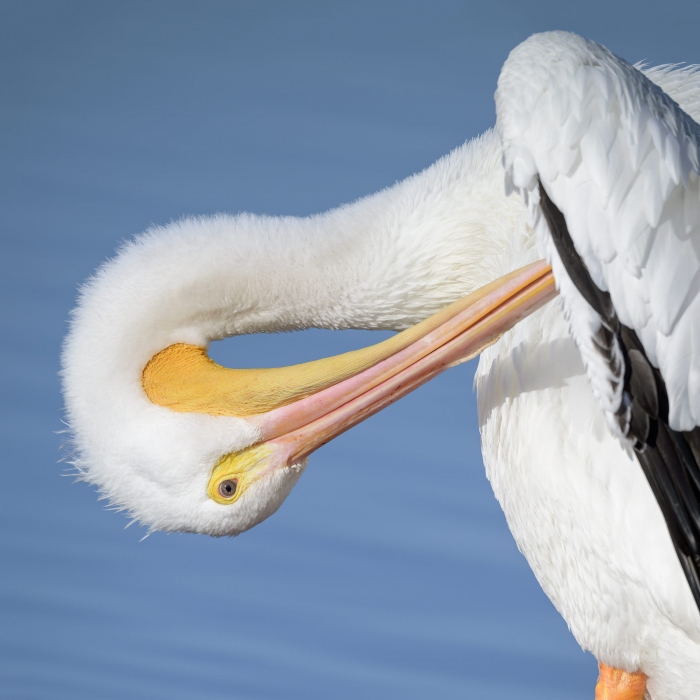
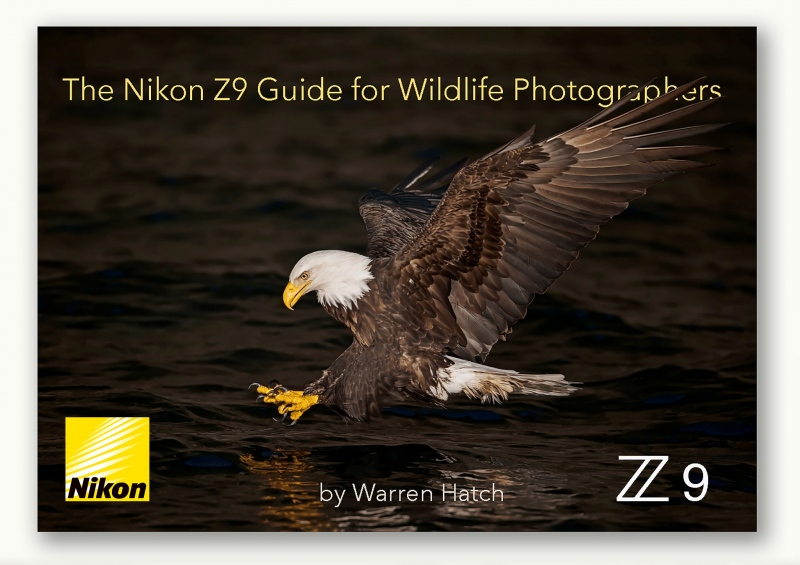
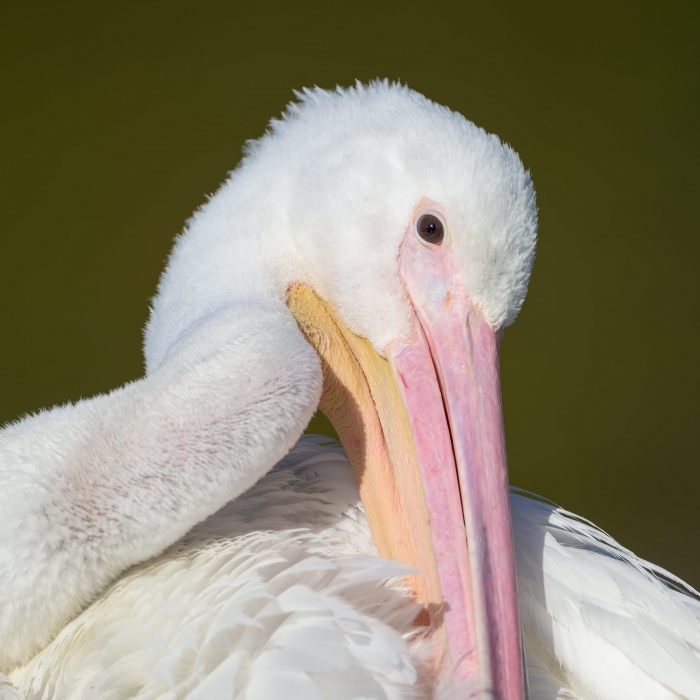
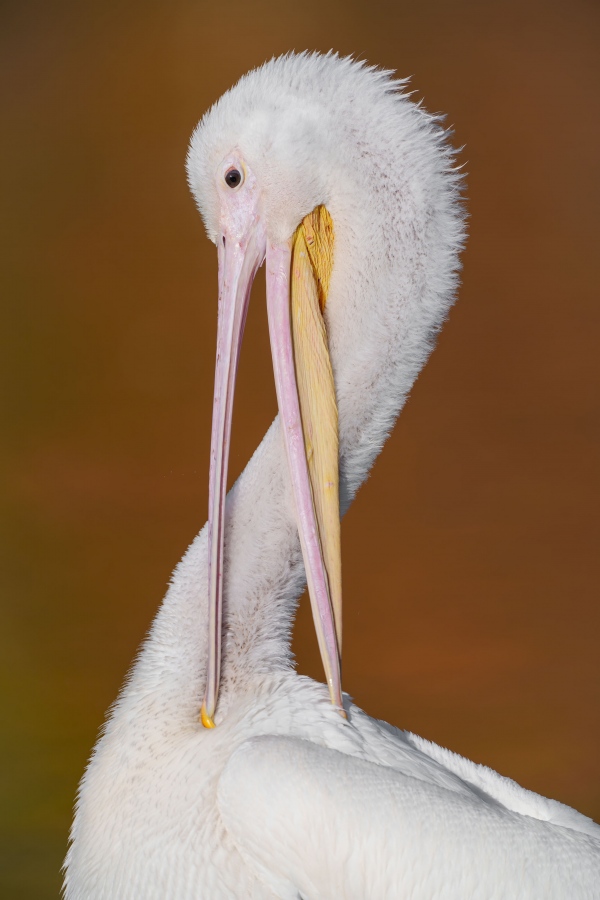
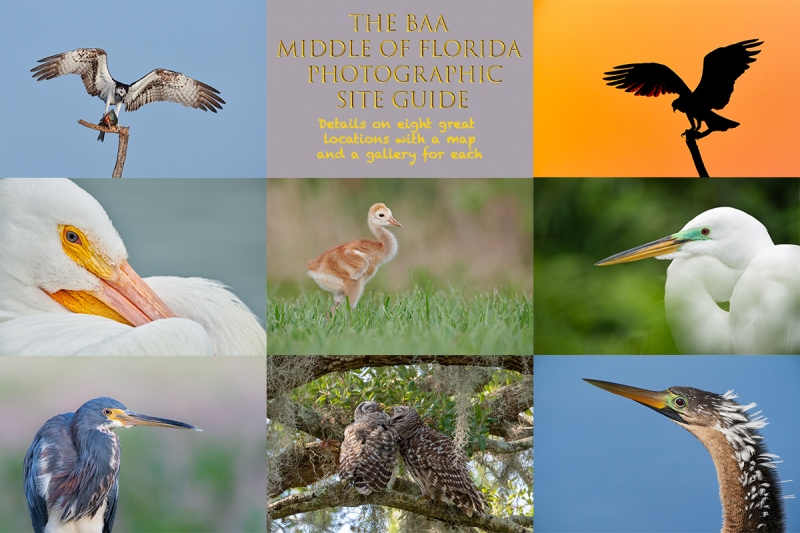













I like all three. Blue, then green and brown(gold?) in that order if I had to rank backgrounds only.
Thanks to all.
Thanks, Steve!
a
Hi Artie,
I switched from Canon to Nikon about a year ago and would offer the following. First, the Z9 and Z8 are not interchangeable in terms of AF (and some other features). Currently, the Z9’s AF is vastly superior for BIF based on the latest FW upgrade which provided specific “bird” recognition. Although I own two Z8’s and am patiently waiting for the promised FW upgrade, it is the worst AF’ing body for BIF of the three systems (Canon, Nikon, Sony) that I’ve used. Unlike the Sony or Canon, it does not recognize eyes for BIF particularly for long necked birds, rather it focuses on the wings, bodies, or feet. The eye recognition is fairly good for static birds, mammals, and in particular for airplanes with cockpit recognition. The Z8, albeit larger and heavier than some of the Canon and Sony bodies, has solid ergonomics, good menus, a great buffer, modes for astrophotography, battery life slightly better than the Canon R5, a decent EVF, etc. though it misses with the absence of an ISO dial, GPS, and the lack of zebras.
With respect to the 800 f/6.3 PF, it is simply the best long range telephoto lens I’ve ever owned. Lightweight enough to handhold for short periods, compact enough for travel, and offers great sharpness, contrast, and color without a TC! Likewise, Nikon offers a tremendous, small and unbelievably sharp 600 f/6.3 PF for those who shoot at shorter FL’s.
Thanks, Adam.
a
ps: I was shocked to learn that the Z9 bird recognition was a recent upgrade ….
Artie
Looks like Sadako and Sigmon will be forever loving making new images! Both fine images however i love #2 a touch better with pose and preening, great job. 🙂
Always with love b
Well I own a Z8 and a backup/second body to my Z9. I love its weight and size.
But the Z9 as 2 key advantages to the Z8.
1. Battery life.
2. The bird detect autofocus (that was rolled out in the last firmware update) is far superior to the animal detect autofocus (Z8/Z9) for avian subjects. Not sure if it coming to the Z8.